These timeless Jewish folktales speak to the human experience across cultures and religions and, like all folktales, are excellent choices to read aloud. Most of these Jewish folktales for children come out of the Yiddish, or Eastern European Jewish experience.
I've said it before and I'll say it again: Jewish books are not just for Jewish kids. First of all, I firmly believe we should expose our children to the culture and traditions of all walks of life. How else will they understand their own? Secondly, all of these folktales have themes which transcend cultural and religious boundaries.
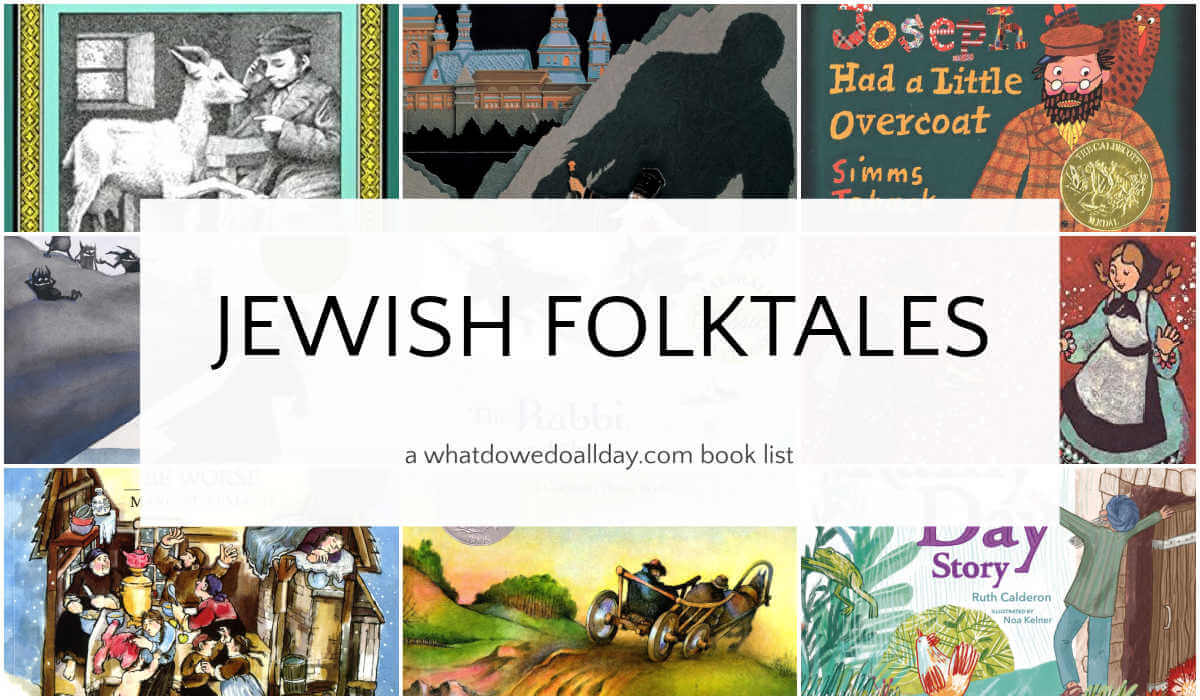
Like many folktale traditions, many of these stories and legends have a healthy dose of humor but all of them have a moral lesson, whether it's obvious or subtle.
Note: this list contains Amazon and Bookshop affiliate links. Purchases made through these links may earn a commission for this blog. Bookshop also supports independent bookstores.
Don't forget our list of 50 folktale books from around the world!
Jewish Folktale Picture Books
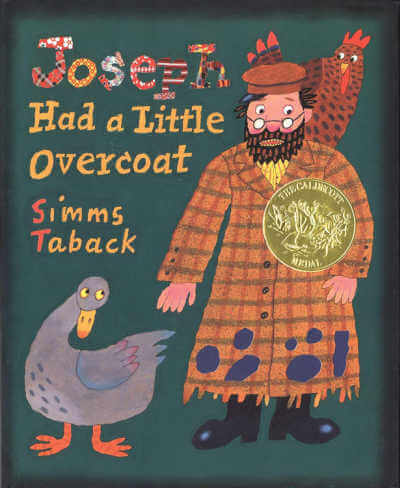
Joseph Had a Little Overcoat by Simms Taback
This Caldecott winner is perfect for even the youngest kids. Based on the Yiddish song (the music is in the end notes), it is the story of ultimate frugality and practicality. As Joseph’s coat wears down, he turns it into a vest, a scarf, a tie, a button, until there is nothing left. Each page features a die-cut from the larger garment that hints to the next manifestation. Taback’s collage illustrations are simply divine, with lots of little details to notice in things like letters on the table, pictures on the wall and headlines in the newspapers. Ages 3 and up.
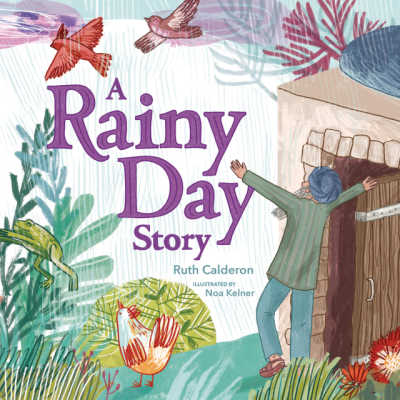
A Rainy Day Story by Ruth Calderon, illustrated by Noa Kelner
This Talmudic story teaches the universal value of considering the needs of others as well as oneself. Rabbi Hanina is walking home in the rain. Illustrations depict an unhappy man, but birds, frogs and other creatures enjoying the pleasures of the rain. The Rabbi asks God why it must rain and cause him so much discomfort and displeasure. When God stops the rain at his request, Rabbi Hanina notices that while he may be content, the rest of the world now suffers. Children will want to discuss the Rabbi's choices and his change of heart. An endnote includes the original Babylonian Talmud text (Taanit 24b) in both Hebrew and English. Ages 4 and up.
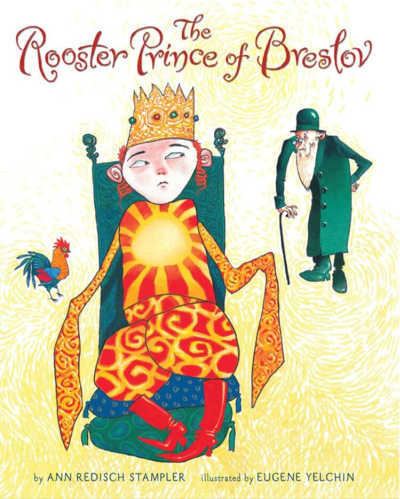
The Rooster Prince of Breslov by Ann Redisch Stampler, illustrated by Eugene Yelchin
Find it: Amazon
I love this Yiddish tale! A young prince gets everything he wants without having to work for it. One day he mysteriously sheds his clothes and starts acting like a rooster. Doctors are called in but no one can find the cure. However, an old man claims he can get the "prince ready to rule the land." Over the next few days, the old man lives with the boy, coming down to his level, relating to him in such a way as to expose the boy's compassionate side, nurturing his desire to perform mitzvoth. I loved this story because it turns a somewhat complex lesson of learning self-worth by practicing compassion and learning the value of good deeds over material wealth into a very accessible story (a rooster boy does elicit a few laughs, too!) for kids. Ages 4 and up. PJ Library has a discussion guide here.
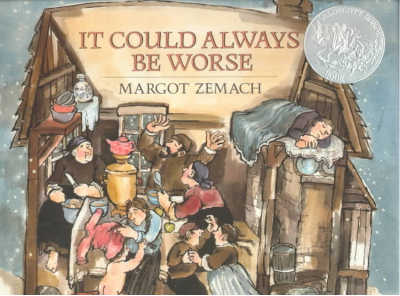
It Could Always Be Worse by Margot Zemach
There are several picture book versions of this Yiddish tale, but Zemach’s is my favorite. A poor man lives in an overcrowded house and the noise and activity is driving him crazy! He seeks out advice from the local rabbi. The rabbi tells him to bring in the barn animals to his house, which turns the place into utter chaos. The illustrations are so much fun to sift through, with their funny little vignettes inside the house. When the farmer finally removes the excess animals and people from the house he declares everything to finally be peaceful — only… it is exactly as it was when he started out. Ages 4 and up.
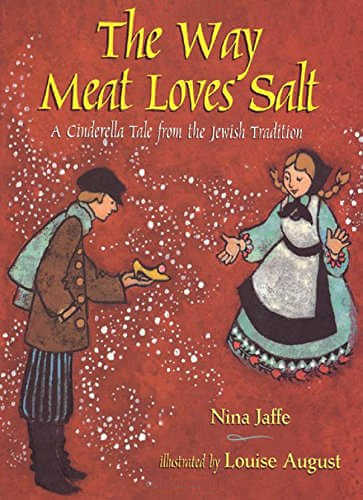
The Way Meat Loves Salt: A Cinderella Tale from the Jewish Tradition by Nina Jaffe, illustrated by Louise August
Find it: Amazon
Shakespeare fans may recognize the similarity of this tale’s beginning with that of a certain epic tragedy. Fortunately, this tale has a happy ending. In Poland, a rabbi with three daughters asks them to describe how much they each love him. The youngest, Mireleh, tells him she loves her father the way “meat loves salt”, and in doing so gets herself banished by the foolish, foolish rabbi. Mireleh travels away from home, is given a magic stick (by the prophet Elijah, it turns out) and ends up married to a neighboring rabbi’s son. At their wedding banquet the meat is served without salt. Ages 5 and up.
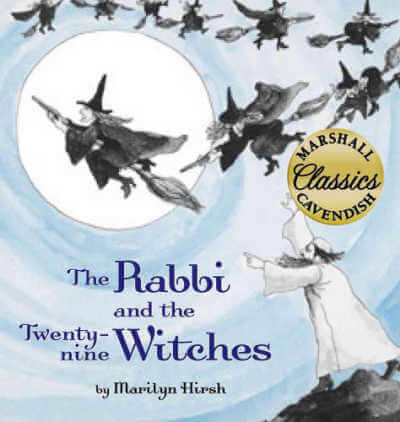
The Rabbi and the Twenty-nine Witches by Marilyn Hirsh
Find it: Amazon
Every month during the full moon, a host (twenty-nine, if we are being specific) of scary, ugly, mean witches torment and frighten a village with their cackles and shrieks, causing the chickens to lay cracked eggs and the cows to give sour milk. A rabbi takes note that the witches do not appear when it is raining. My sons, who had recently watched The Wizard of Oz, immediately understood the witches’ reluctance to get wet. The rabbi, apparently just as smart as my kids, lures the witches out in the rain, and — you guess it — they melt. It’s really quite a funny little story. Ages 5 and up.
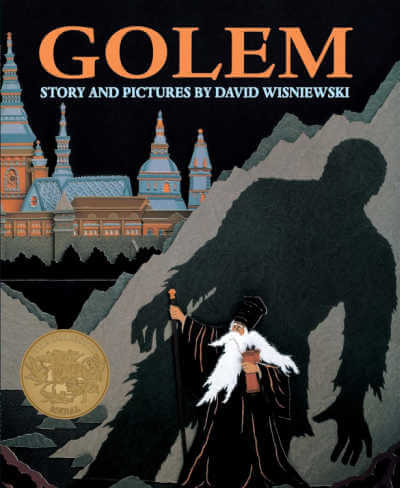
Golem by David Wisniewski
The Golem is giant created from clay and brought to life by a rabbi skilled in the teachings of Cabala, a form of mystical Judaism. The rabbi creates the Golem to protect the Jewish ghetto in Prague from its enemies who accuse the Jews of mixing the blood of children into their flour. Only a Golem is able to protect the unarmed inhabitants of the ghetto who are besieged by their enemies. This is a beautifully illustrated and powerful book, and an excellent choice for older children. I think it's essential to share the extensive historical and cultural endnote with children. It’s a good book to start off a deeper conversation about the history of the Jews in Europe, too. Ages 7 and up.
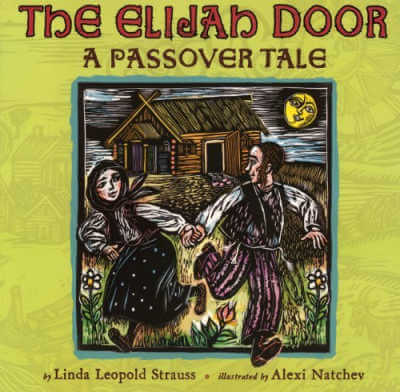
The Elijah Door by Linda Leopold Strauss
Find it: Amazon
This story about families coming together can be enjoyed anytime, not just at Passover. Two families, the the Lippas and the Galinskys always celebrated Passover together, but complicated livestock dealings turned them into adversaries. The son and daughter of the opposing houses, however, want to get married and they enlist the help of the rabbi in their plot, which involves a very, very, very long seder table. The story also introduces Passover traditions, like following breadcrumbs and the Four Questions. The text is lovely and I adore the woodblock illustrations. Ages 5 and up.
MORE: Passover books
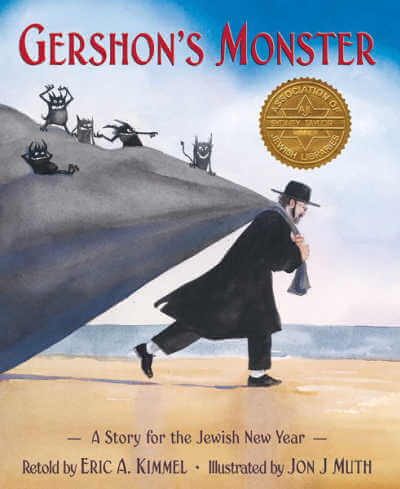
Gershon’s Monster: A Story for the Jewish New Year by Eric A. Kimmel, illustrated by Jon J Muth
Find it: Amazon
On Rosh Hashanah, faithful Jews perform tashlikh, a ritual casting of their mistakes into the water. The tashlikh is the central point of understanding for this story about Gershon, the baker, who decides that, instead of atoning for his errors and making amends, he will shove them into a bag in his basement. These sins, represented as little demons, do not go away and turn into a larger monster, which Gershon must face. It sounds like a serious book, but Kimmel’s skillful narrative makes it accessible and even though there is an obvious moral, the story is interesting. Jon J. Muth is one of my favorite illustrators and his divine watercolors perfectly accompany this story of the importance of repentance. An end note gives more information and background of the legend. Ages 5 and up.
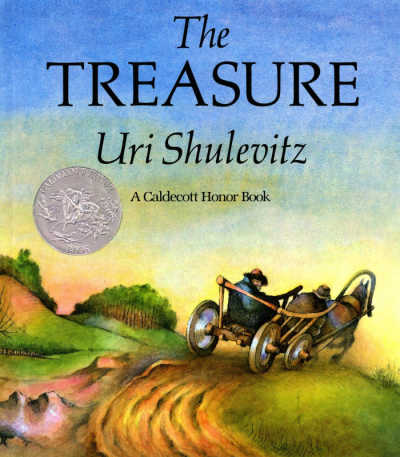
The Treasure by Uri Shulevitz
Isaac has a dream that he should go and look for treasure under the bridge by the Royal Palace. He feels quite foolish doing so, but cannot ignore the command. The poor, elderly man sets off on the journey only to find a heavily guarded bridge and a guard with his own dream. Isaac's reverse journey has an interesting narrative repetition device. It's a rather quiet tale of trust and faith, with the message "sometimes one must travel far to discover what is near." Ages 5 and up.
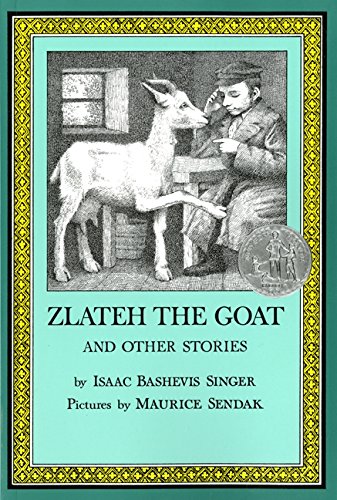
ZLATEH THE GOAT AND OTHER STORIES by Isaac Bashevis Singer, illustrated by Maurice Sendak
If you are not familiar with Chelm, Singer's book of short stories is a great introduction. In Jewish folklore, Chelm came into being when an angel, tasked with distributing a sack of fools around the world, tripped and spilled them all in one place! Chelm is a village of fools and the seven Elders are the most foolish of all. There are seven stories in all, each with a little lesson to be gleaned, but read them for the light-hearted humor and a few giggles. Ages 5 and up.
Further resources:
- Learn more about Jewish American Heritage Month.
- Jewish families can sign up for free monthly books from PJ Library.
- The Jewish magazine, Tablet, has an interesting children's book column.



Even in Australia says
Great list! I know most but not all of these. We have a Barefoot book compilation of Jewish folktales but we haven't made it through all of them. There are also lots and lots of books of Elijah stories alone. I'm partial to Elijah's Tears. Nina Jaffe and Howard Schwartz also have lots of collections of Jewish folktales although Schwartz's are more for adult readers or academics.
Erica MomandKiddo says
I don't know those so I'll have to check them out. Thanks for the suggestions.
madelynrosenberg says
Excellent list!!
boymamateachermama says
Gershon's Monster is a favorite here! Thanks for sharing at After School!
Beth Schmelzer says
My favorite Australian folktale is "The Singing Snake!" I love that you have a "comment addiction" as I do also.
Mine isn't fed very often, I am sorry to say!
Love your folktale lists. I will email you some more titles and favorite authors you may want to add to your list.
Thank you for leading me to Amy at http://www.SunLitPages.com and Carolyn at "House Full of Bookworms."
After signing up for both their blog sites, I received a free e-book with many more titles to share! Yeah!!
All these resources will help me with my own middle grade writing.
Erica MomandKiddo says
Enjoy the blogs! I'm so glad to hear you love them.
Amy Hare says
I have been looking for a different version of the traditional yiddish story about how the moon gets a coat. The typical telling is that the tailors end up making the coat. I ran across a version where the seamstresses (the women) made the coat . If anyone knows that version or can point me to it online, I would greatly appreciate knowing how it goes. Thanks for any help.
Tamara says
I highly recommend "something from nothing". I don't know who the author is, but it's a great book about a grandfather teaching a child that you can make something important out of something seemingly disposable.
Erica says
Thanks for the recommendation!
Shaina says
That was one of my favorites as a kid! The illustrations are gorgeous, and there's a little family of mice that live beneath the floorboards of the family's home and collect the scrap fabric -- I used to love watching their house fill up with new fabric items as the piece in the main story got smaller! The lesson I got from that story was also that just because something is damaged doesn't mean it's worthless; sometimes what we think is now useless is actually just a change.
Dede says
“The Spice of the Sabbath” was a wonderful story in an anthology I read to children long ago. I’d love to find it again to read to seniors who would enjoy it.
Norman Perrin says
Found this excellent site while looking up for Jewish stories suitable for 4-5 year olds.
Favorite picture books by Sheldon Oberman
The Wisdom Bird, A tale of Solomon and Sheba
The Always Prayer Shawl The journey of a prayer shawl, each part has been repaired and replaced several times over the generations, yet it is still the same prayer shawl
By the Hanukkah Light The power of story to carry light in the darkness.
Erica says
Thanks for the recommendations.
Joy says
You need to add Phoebe Gilman’s Something From Nothing to this list! It is one of the most beautiful picture books of all time, but underrecognized because it is by a non-US author.
Erica says
Thanks for sharing your recommendation!